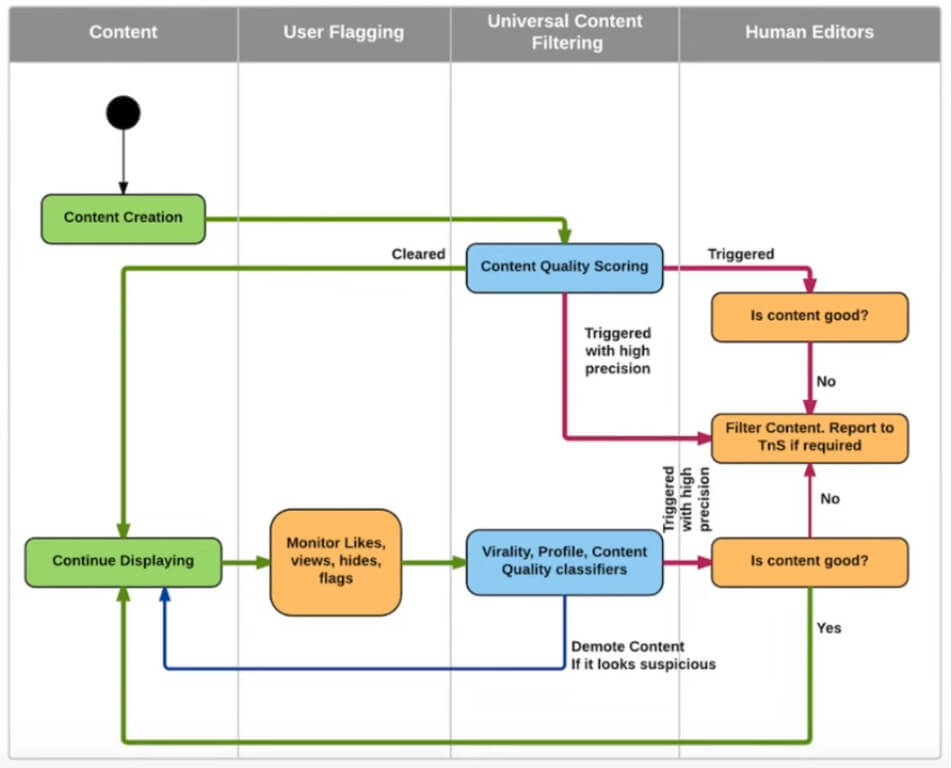LinkedIn is rewarding People and Businesses with Lots of Organic Reaches (if you do it right) who are using LinkedIn actively to promote their content – Just like YouTube rewarded Content in 2008, Facebook rewarded it in 2011 and Instagram did the same in 2015.
And people who started sharing content over these platforms back in those days – you probably know most of them as Industry Leaders, Internet Celebrities, Popular Influencers, etc, etc.
As of May 2019, LinkedIn has:
- 610,000,000 users
- 300,000,000 Monthly Active users
- 120,000,000 people visit LinkedIn on a daily basis
And these numbers are growing. This means more and more opportunities to reach your target audience.
This is the best time to go all in on LinkedIn – because LinkedIn is still in the growing phase. And to promote themselves, LinkedIn is going to promote your content, if you check the right boxes.
Ultimately, this is your Goal:


To get more engagement over your, understanding How the algorithm works and how can you make it work for you, is very important.
WHAT IS AN ALGORITHM?
The algorithm is a set of rules created by LinkedIn. They have done it so to make the user experience better. If people continue to like the content they are engaging with, they will keep using LinkedIn.
That’s why an algorithm is important for them – or for any other Social Media Platform. Facebook, Instagram, YouTube, etc, have their own set of Rules – Algorithms. And following these rules will reward your content – that’s why the algorithm is important for YOU.
The algorithm keeps on updating and changing, to make it more engaging and relevant.
In 2019, LinkedIn’s Most Recent Algorithm change was focused on RELEVANCE.
RELEVANCE
According to Pete Davies [LinkedIn’s Director of Product Management], LinkedIn’s Algorithm is able to understand – which content is relevant to your audience. This is how it decides, whether it will or won’t show someone your post.
If someone from your audience has never engaged with your content in the past, there’s a good chance that your post will not be shown to that person.
If someone usually engages at least once or twice a week with your content, there is a good chance that your content will definitely show up in their feed.
This is why making people engage with your content is very important.
But how can you do it? The answer is simple – by understanding how Linkedin Algorithm works. And then, use LinkedIn accordingly to make it work for you.
This is the complicated version of the updated LinkedIn Algorithm:

But let’s focus on a simplified version of it.
When you post something, it goes through Quality Score, Content Engagement Monitoring, and many other stages. LinkedIn even has a stage, when sometimes Human Monitoring is also required.
But that’s not something you should worry about. To make LinkedIn’s Algorithm work for you, you only need to focus on key factors [some of them suggested by LinkedIn Officials]:
Specific Topic:
As deep as you can go, be specific – to define your niche and the topic for your content, it’ll perform better.
For Example; when you share a Video about Veterinary Doctors vs when you share a Video about Dog’s Doctor [not any other pet, but specifically Dog] – the latter topic is more appealing.
While you might think that the number of Veterinary Doctors are definitely higher than the Dog’s Doctor, so there are more chances for it to get more engagement.
Unfortunately, this is not the case – because the topic is too generic. It is not appealing to anyone. While the Video about Dog’s Doctor is appealing to – specifically people who like Dogs, not just any pet.
LinkedIn is able to understand the difference between the two, and Hashtags play an important role in this.
Hashtags:
LinkedIn suggests adding at most 3 hashtags in a post. This way, it again gives a signal to the algorithm that it is targeted toward the targeted audience, and not towards just everyone. This makes this piece of content more relevant to a specific set of people.
Being specific with Hashtags will help your post get more attention. For Example; if your post is about a Tuna Recipe – your Hashtags should be “fish”, “tuna”, or “seafood”, instead of “food” or “recipe”.
[Quick Tip – using Hashtags within Comment Section doesn’t help]
Ask a Question:
Every Social Media Platform [except YouTube] will reward your content if the engagement on your post through comment sections is high. [‘Watch Time’ is the most important factor for YouTube]
If you can get your audience to engage with you and each other over the comment section, this alone will get your post popularity to the top.
Always encourage people to engage with you, by simply asking them open-ended questions.
Don’t Share Outer Link:
This is probably the most overlooked factor by new content producers – or even experienced content creators.
LinkedIn wants to promote their own platform – they want us to use LinkedIn. And when someone, let’s say, is sharing a YouTube Link to their posts – they are promoting YouTube.
What LinkedIn wants you to do, is to make this video a part of LinkedIn itself. So instead of sharing a YouTube Link, it is better to upload the video to LinkedIn.
Similarly, sharing your website’s link within the post is not a good idea, you will be penalized for that. Instead, share the link in the Comment Section and inform your audience about it within a post.
Timing is Important:
As LinkedIn is a professional Social Media Platform, many people use it during work hours – on weekdays. So, it is probably not a good idea to share content over the weekend, especially on Sunday.
Also, sharing content during work hours increases the chances of getting viewed by as many as people possible, as they are active during those hours.
Try Testing by sharing your posts at different times, and different days of the week, and observe the engagement. You can even try posting content over a weekend once in a while and compare the results.
Initial Hours Engagement:
Engagement in your posts during the initial hours [usually the first 1-Hour for most Social Media Platforms] is very important.
When you post something, it is visible to only a small number of people during the initial hours. If your posts get good engagement during this period, the Algorithm will consider them as good content and then will show them to the rest of your connections/followers.
This makes even more sense, as to why Timing is Important. You want to share your content during the time most people tend to be active on LinkedIn, so you can get maximum engagement during the initial hours.
CONCLUSION
Of course, Paid Ads are going to bypass all these steps and show your content to relevant people, and will generate leads or Business for you.
But if you are trying to grow Organically, you have to keep the following things while publishing your stuff:
- Specificity – being not too generic, but focusing on a specific topic
- Hashtags – recommended using 3 specific Hashtags
- Encouraging your audience to engage in the comment – by asking a question
- Avoid sharing links from other websites. Upload Video within LinkedIn instead of sharing YouTube Link. Write an Article within LinkedIn, instead of sharing your Blog Post link.
- The day and time you publish your post are important too. The initial hour engagement brings us to the next key factor.
- Getting initial engagement is important – because it decides whether your post will be shown to other people based on the initial engagement your post gets.
These are the set of rules LinkedIn [and usually other Social Media Platforms] wants you to comply with because it then makes LinkedIn more engaging. And if you do so, you will be rewarded as well.
You’ll be interested: Actos
What are some of the Tips and Tricks you to get results on any Social Media Platform?
